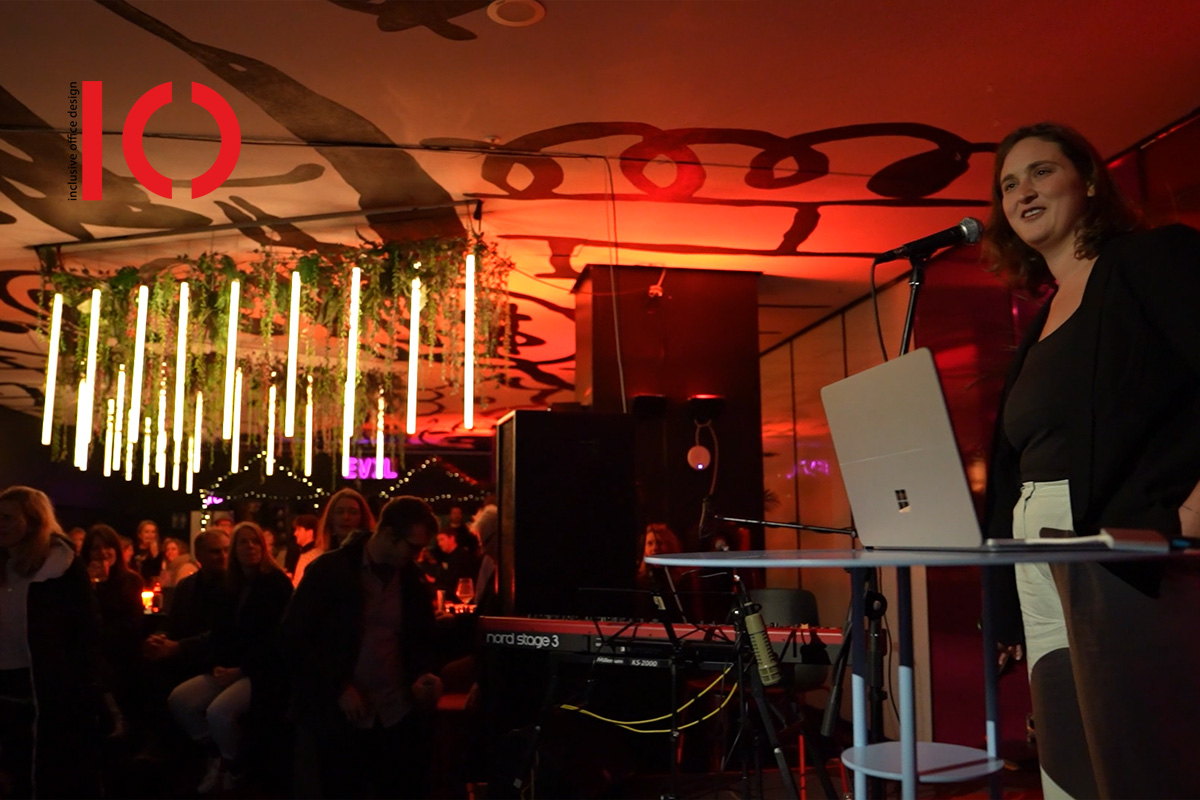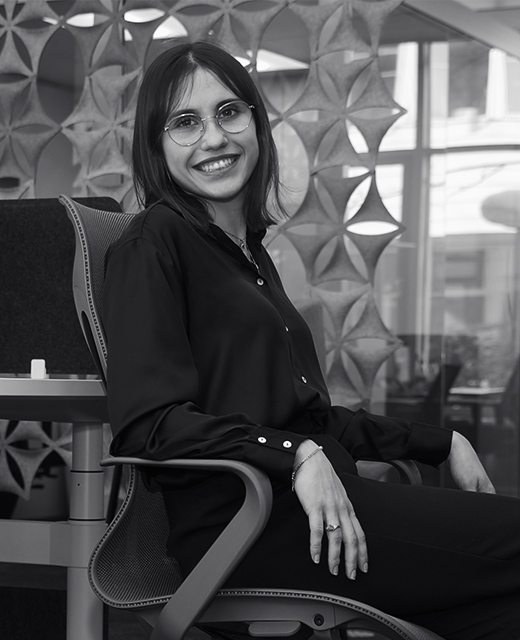Inclusion in the workplace – a topic that is close to our hearts. How can we better integrate people with different requirements and needs into the world of work? Julia Müller from IOD (Inclusive Office Design) addressed this question in a captivating presentation at our annual event with König + Neurath.
Julia is an experienced, self-employed interior designer. The topic of inclusion has always been close to her heart. With IOD, Julia wants to help shape the working world of tomorrow and drive inclusion forward.
Her motto, “Make inclusion the new normal”, makes her goal clear.
What is inclusion and why do we need it?
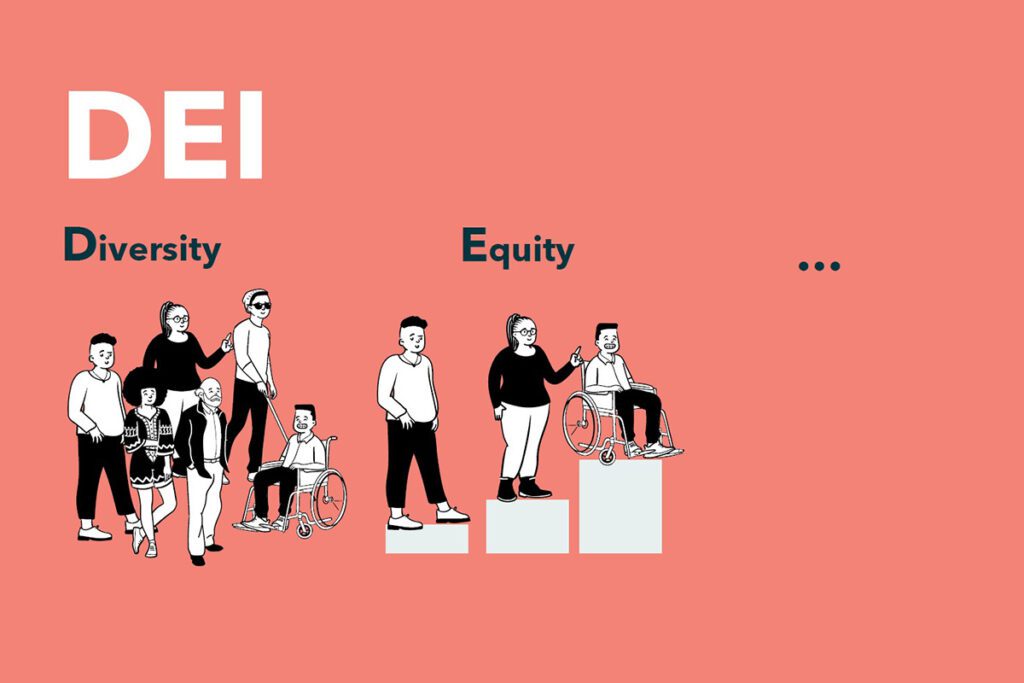
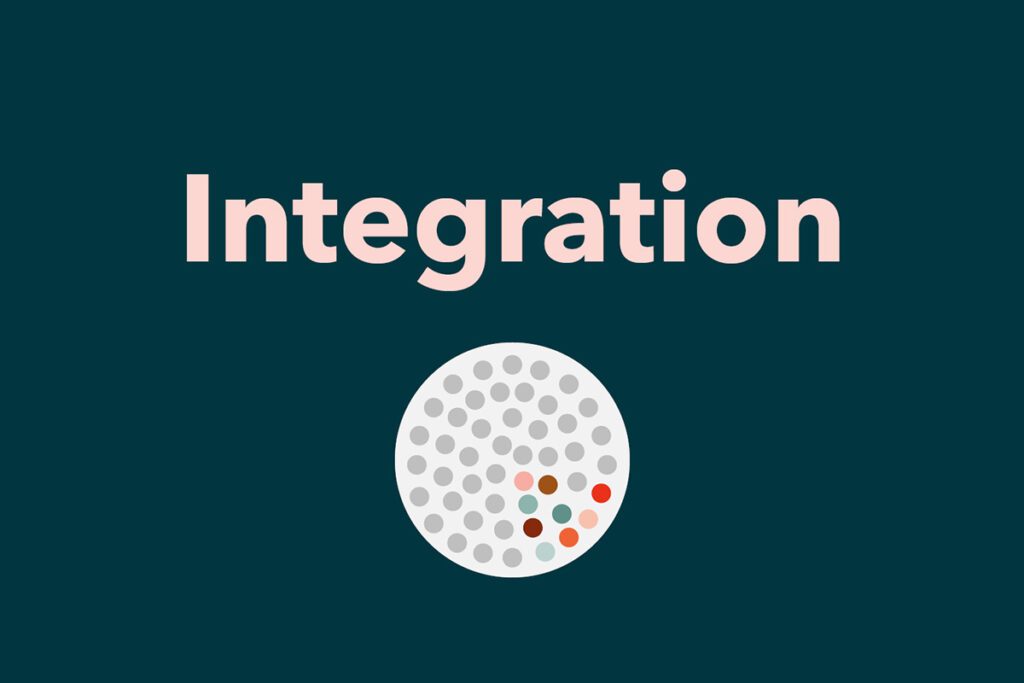
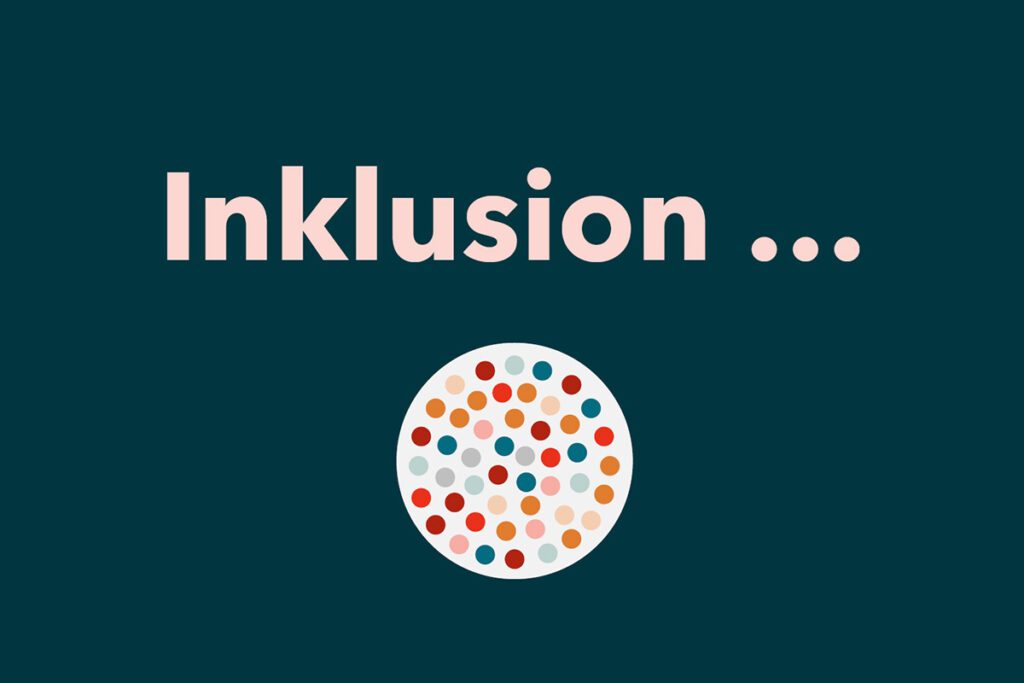
Inclusion in the workplace means creating a working environment that offers every single person, regardless of their individual characteristics, the opportunity to actively participate, contribute and succeed. It is not just about the mere presence of different people, but about creating an atmosphere that respects and promotes diversity and sees it as a strength.
The concept of inclusion aims to break down barriers that could restrict access or participation of people based on their background, culture, ability, gender identity, sexual orientation or other characteristics. It includes measures such as accessibility, equal opportunities, promoting diversity and creating an open and supportive work culture.
The difference between integration and inclusion
There is an important difference between integration and inclusion when it comes to how we incorporate diversity into our society.
Integration creates small segregated areas in the system. Let’s take workshops for people with disabilities as an example. They are closed systems in which those involved usually keep to themselves and rarely interact with society.
In contrast, an inclusive system strives for a different goal. Here, individuality is seen as normality. Diversity is welcome and encouraged. Inclusion means that every person, regardless of their circumstances, can be part of society naturally and without barriers. Inclusion is the endeavour to create a society in which diversity is seen as enrichment.
Why is inclusion so important?
- Cohesion and understanding: Inclusion promotes mutual understanding and creates an atmosphere of cohesion. When we see and are seen by others, a strong bond is created.
- Innovation and diversity: Diverse teams are more creative and can tackle challenges from different perspectives. The diversity of views and skills opens up new avenues for innovative solutions.
- Attracting skilled workers: Young talent favours companies that foster a diverse and inclusive culture. A working environment that values diversity attracts highly qualified professionals.
- Cost savings and sustainability: Investments in inclusive office planning pay off in the long term. By considering barrier-free design from the outset, companies save costs for subsequent retrofitting and at the same time promote a sustainable working environment.
- Breaking down barriers: Inclusion broadens our horizons by getting us to interact with people outside of our usual circles. This helps to break down not only physical barriers, but also barriers in our minds.
- Improving quality of life: An inclusive environment creates a better future for everyone, where all employees feel comfortable and can perform at their best.
Inclusion in the workspace stands for much more than just the inclusion of people with disabilities. It is a compass for a more inclusive, equitable and productive working environment.
Inclusion affects us all!
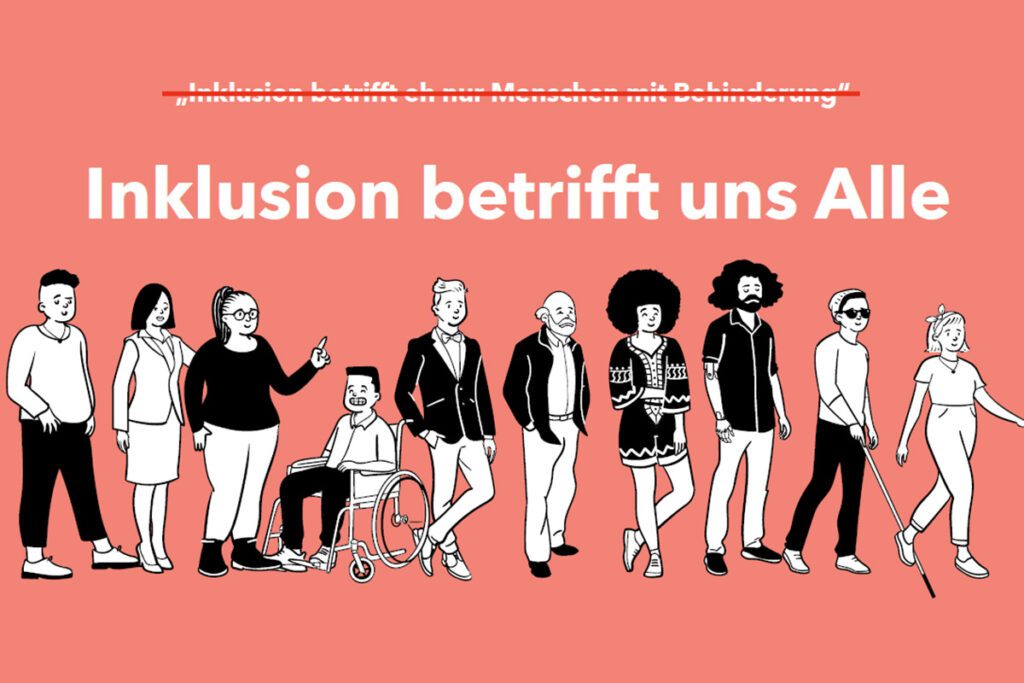
The example of Sophie illustrates that inclusion does not only affect people with disabilities. She shows that people without visible disabilities can also benefit from inclusive working environments and that they can maintain their well-being and performance in the long term.
Sophie started her new job during the pandemic and has become a valuable team member with lots of ideas. After returning to the office, she struggled with unexpected challenges – even though she has no visible disabilities.
While working from home during the pandemic, Sophie was totally in her element. But the transition back to the office was difficult: loud colleagues, annoying background noise and a lack of adjustments made her work a challenge. These circumstances drained her energy and led to a significant drop in performance with more frequent absences.
Sophie’s story illustrates how important it is to design inclusive working environments – not just for people with visible disabilities, but for the well-being and performance of all employees. It shows that an inclusive working environment plays a key role in realising full potential at work.
A supportive working environment could include adapting the room acoustics, offering various retreat or work options and also an open culture of dialogue within the company. This allows employees’ needs to be communicated and heard.
Inclusion can also provide a market advantage in the race for new talent. The majority of employees, namely 76%, want a diverse working environment (according to McKinsey&Company – Why diversity matters – Jan 2015).
In addition, everyone can potentially be affected by physical changes, as a survey on people with disabilities in Germany from 2022 shows (Federal Statistical Office Press Release No. 259 22 June 2022).
It may come as a surprise that only 3% of all disabilities are congenital, and that there are around 10 million people with disabilities living in Germany alone, almost 8 million of whom have a degree of disability of 50 or higher. These figures make it clear that inclusion affects us all and that we can therefore build a sustainable and caring society.
By creating an inclusive working environment, we are investing in the future of us all.
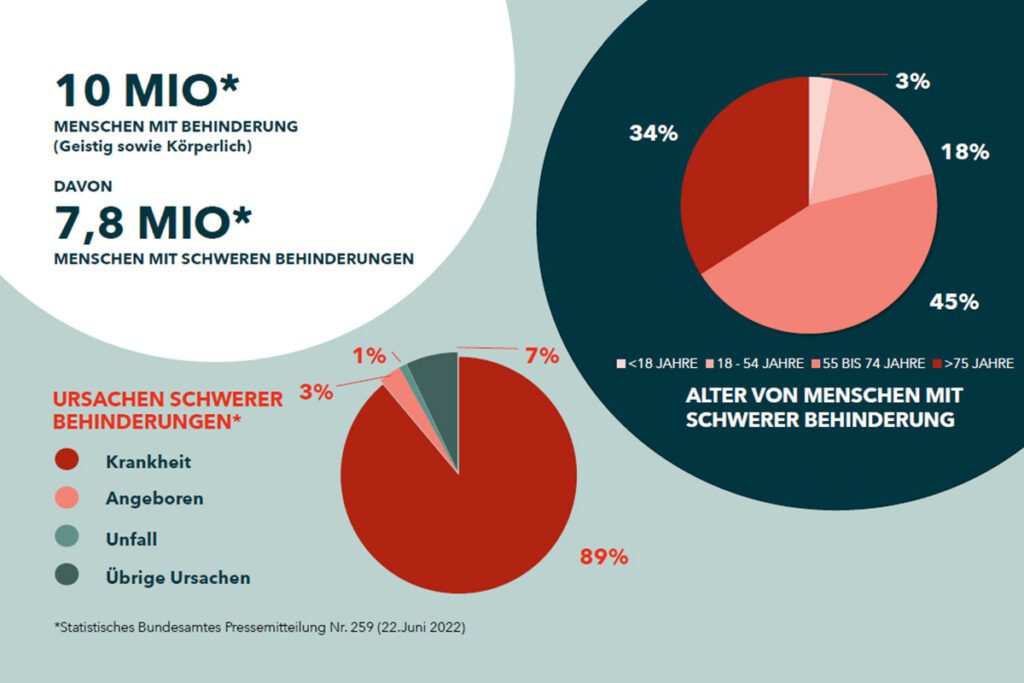
Why do we find it difficult to implement inclusion?
Julia’s presentation emphasises the importance of inclusion for each and every one of us. Nevertheless, there are some obstacles to its realisation:
Prejudice: Prejudices are common and normal. The real goal is to overcome them. They create fear of contact, as we often feel unsure of how to deal with people outside our usual circles.
Structural aspects: Remodelling a business for accessibility poses financial challenges. The costs often contrast with the benefits and are therefore often seen as a deterrent.
Conclusion: Inclusion is an opportunity!
Inclusion offers us the chance to progress both personally and as a company. It is up to us to seize this opportunity and make inclusion a natural, attractive thing.
Special thanks to Julia for her outstanding presentation at our event (to the event blog) and her contribution to this blog.
If you have any questions on this topic or need further information, please feel free to contact us. IOD and Hauser will be happy to help you at any time. To the contact form.
On our news page you will find more exciting topics about New Work and workplace design. Feel free to drop by.
Best regards,
Giulia
